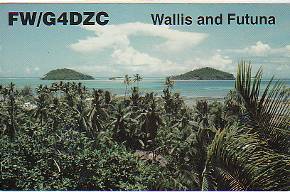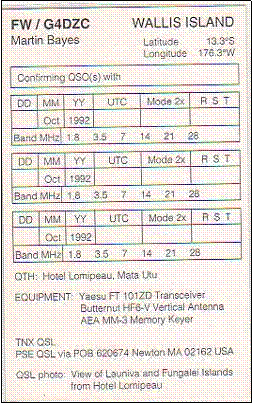


|
QSL cards are a way for hams to prove that they made a contact with a particular person or place. The completed card always has four kinds of information:
1. The call sign of the ham who the card belongs to is (FW / G4DZC).
2. The location of the ham when the contact was made. (in which country and often what city or town)
3. The call sign of the other ham who made contact with them is recorded in the Confirming QSO(s) with box.
4. The details of the contact (what date, what time, what frequency band and whether it was a contact made with talking or Morse code) are recorded in the other boxes.
To make it easy to fill in a QSL card, hams often print a series of boxes to put those bits of information.
The time box is labeled UTC for Universal Coordinated Time.
To make it easier for hams living in different time zones to exchange information, hams agree to use one standard time wherever they are located in the world. UTC was originally called Greenwich Mean Time, because it was the time in Greenwich England. |
|
Can you find Wallis and Futuna on a world map? Hint: Take a look at the Latitude and Longitude coordinates on the Wallis Island QSL card! |
|
©Natasha Bochkov, M.C.S., Martin Bayes, Ph.D., and Donna LaRoche, M.Ed. |


